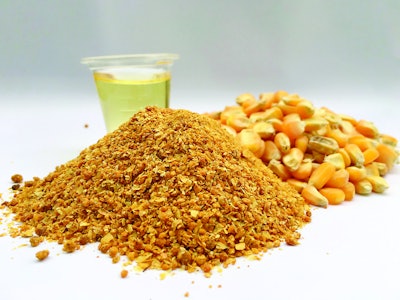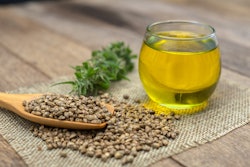
New dried distillers grains (DDGS) feed ingredients, including high-yeast DDGS, could give feed formulators more flexibility in how they use DDGS, according to research from South Dakota State University and POET Nutrition.
High-yeast DDGS have a higher concentration and greater digestibility of several key amino acids, including lysine, threonine and methionine, than conventional DDGS, according to the analysis. Like conventional DDGS, dried distillers with solubles and yeast mass, or GDDY, is a byproduct of ethanol production. But with GDDY, the dried solids from the fermentation process are divided into two portions — one containing the bulk of the fiber, and another comprised of the yeast and protein factions.
The amount of yeast left over from the fermentation process can be significant, constituting up to 25% of the total product, according to the study’s authors. As a result, GDDY contains more protein and amino acids than the standard DDGS.
“Currently, several new corn fractionation technologies are being developed. These technologies add value by separating the various components of corn, allowing for differential utilization of subsequent product streams,” the study’s authors said in an email to Feed Strategy. “There is an opportunity to optimize animal feeding by separating corn into its most valuable components. In this regard, understanding product value to practical swine feeding begins with product characterization and determination of feeding value.”
GDDY has a similar energy content as corn, but the concentration of digestible amino acids is more similar to soybean meal, according to the authors. That could allow producers to use GDDY as a source of energy and protein, increasing formulation flexibility.
The cost of GDDY falls somewhere between soybean meal and corn gluten meal, the authors said, and could prove to be a more sustainable option compared to conventional alternatives.
The South Dakota State University study, published in the Journal of Animal Science in late April, found no significant differences between GDDY and the performance of more conventional feed ingredients. However, the authors noted that other studies have found high inclusion of GDDY in later stages of the nursery period can compromise growth performance. This may be a result of an excess of leucine, which can result in a deficiency of valine or isoluecine.
Additional research, which the South Dakota State University team has completed but not yet published, found that up to 14% GDDY could be included in early nursery pig diets without compromising growth performance — a result that suggests the ingredient could be suitable in growing-finishing and sow diets as well, the authors said.












